One of the most commonly used letters, the Jeem letter (ج), appears in four different forms: initial, medial, final (connected), and isolated. Understanding these forms is essential for reading and writing Arabic correctly. In this lesson, we will explore how the jeem letter looks and functions in different word positions, helping learners build a strong foundation.
Interactive Activities to Learn the Jeem Letter Effectively
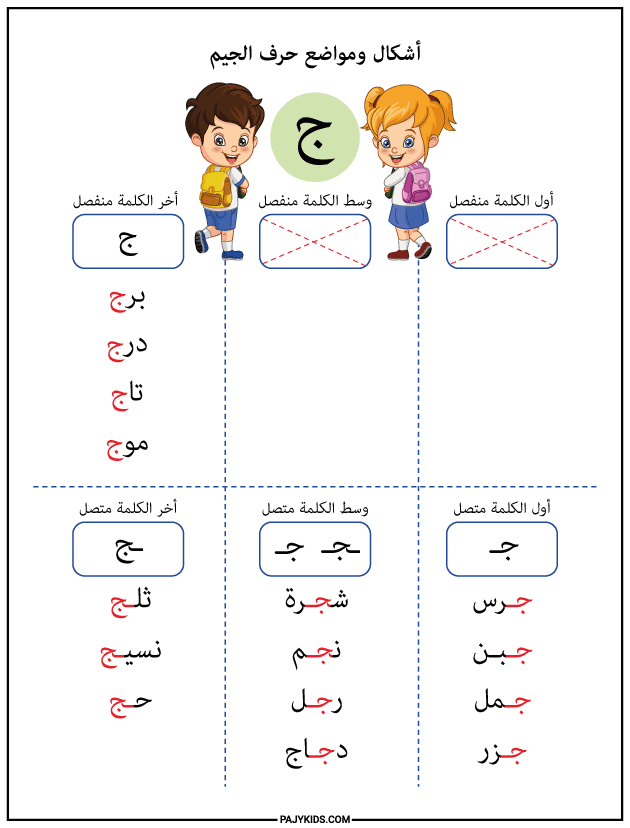
- The Initial Shape of Jeem: (جـ)
When the jeem letter appears at the beginning of a word, it takes on the form جـ. This version connects to the next letter and includes a loop above the line with a dot underneath. Examples of words that begin with Jeem include جمل (camel) and جديد (new). Recognizing this initial shape is crucial for students as they start reading basic Arabic vocabulary.
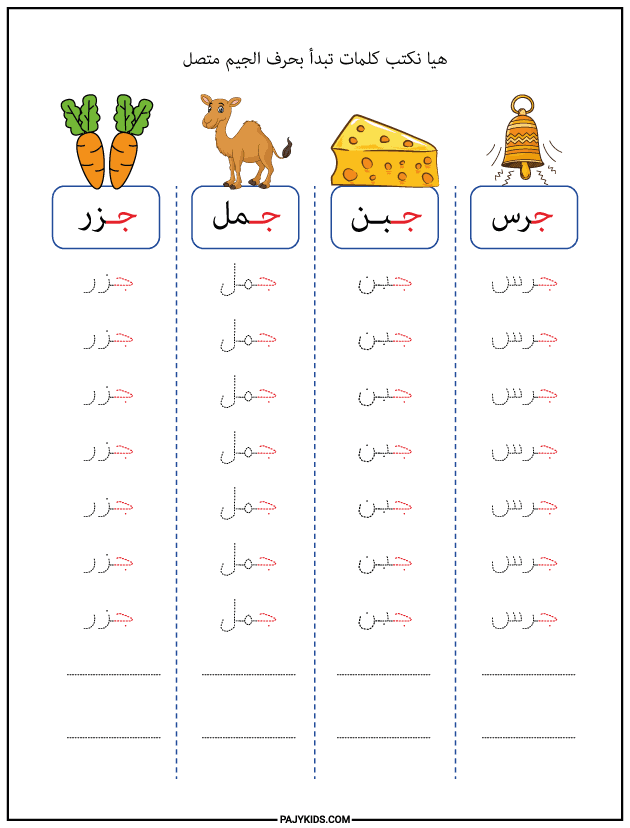
- The Medial Shape of Jeem: (ـجـ)
In the middle of a word, the jeem letter transforms into ـجـ, connecting smoothly with the letters before and after it. It retains its distinctive loop and dot. Words like مجتهد (hardworking) and تجربة (experiment) contain this medial form. Becoming familiar with this version of Jeem helps learners improve reading fluency and word recognition in context.
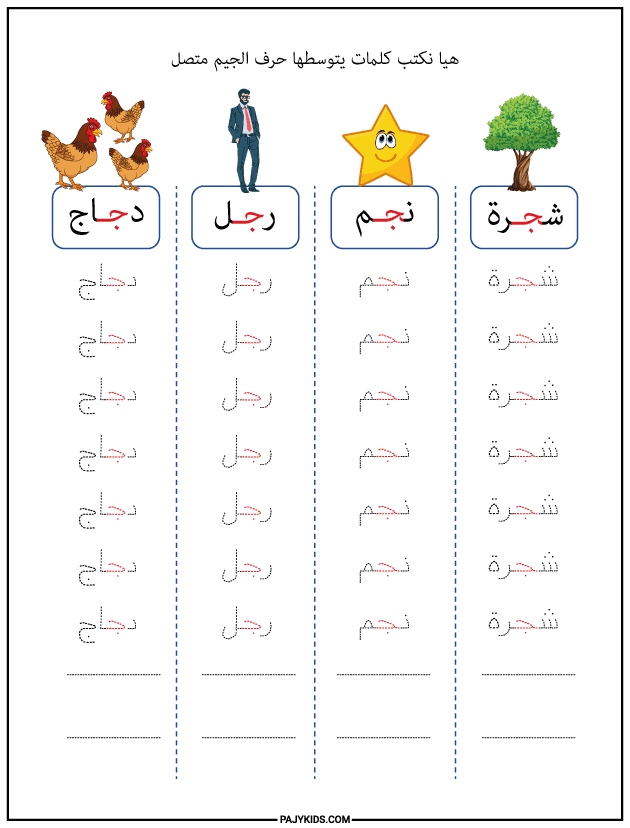
- The Final Connected Shape of Jeem: (ـج)
When the jeem letter appears at the end of a word and is connected to the previous letter, it takes the form ـج. This is common in words such as منهج (curriculum) and حج (Haj). Understanding this connected final form is an important part of mastering Arabic writing conventions and identifying the root of the word.
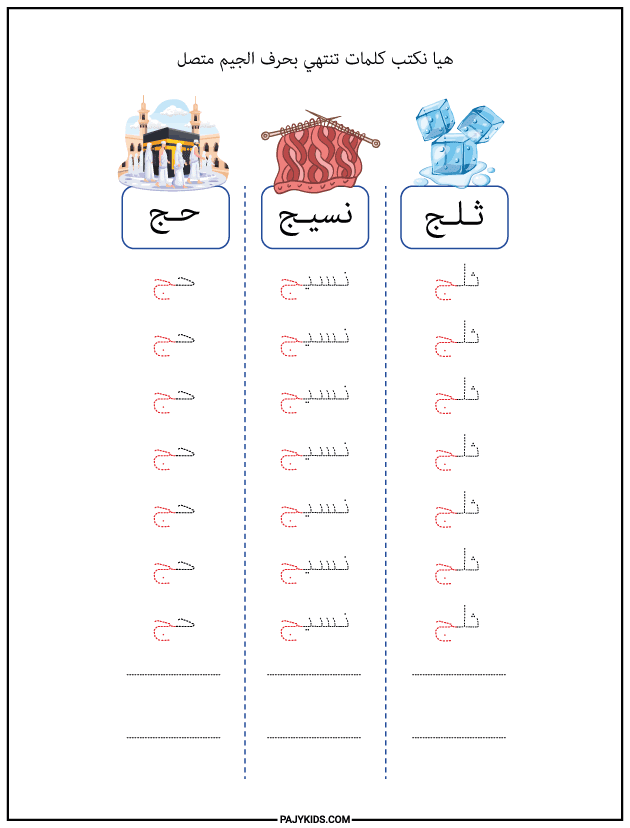
- The Isolated Shape of Jeem: (ج)
If Jeem appears at the end of a word without being connected, it retains its original isolated form: ج. This occurs when it follows a non-connecting letter. Examples include تاج (crown) or برج (tower). Recognizing this standalone version of the jeem letter helps learners understand when and how Arabic letters disconnect depending on the script’s flow.
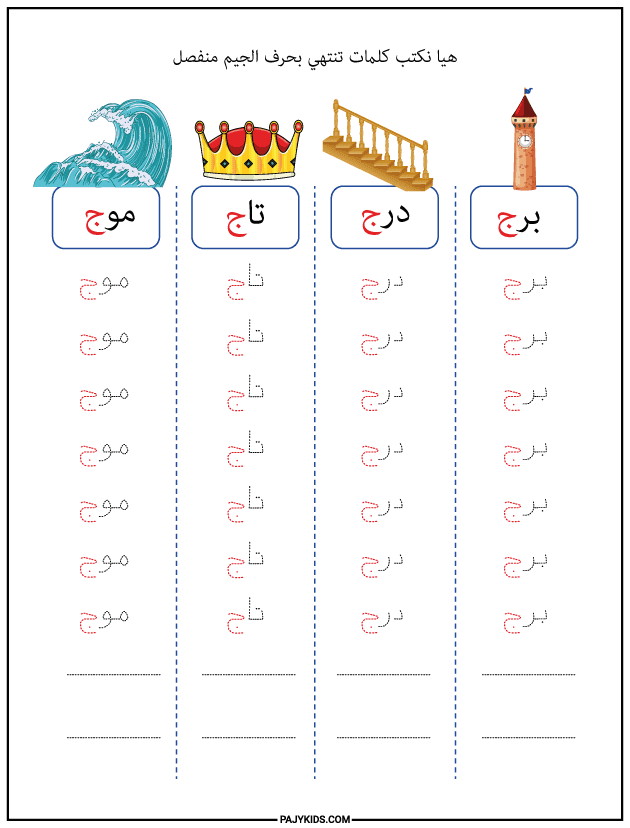
To effectively learn the jeem letter in all its positions, students should engage in regular practice. Activities such as tracing, matching exercises, and writing full words help reinforce visual recognition. Flashcards and digital learning tools also provide interactive ways to memorize each shape and use it in context.